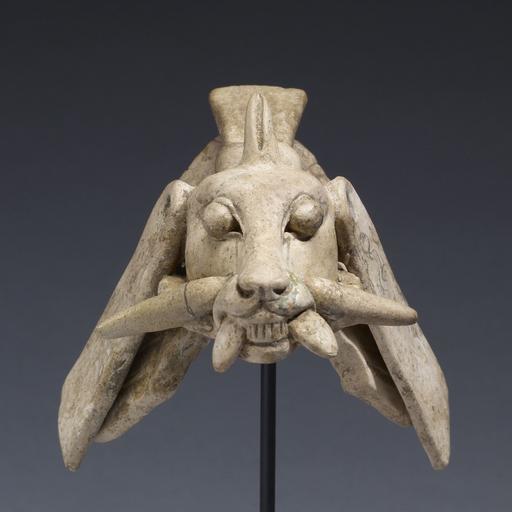MAKE A MEME
View Large Image

| View Original: | Veracruz - Deer Head Mask - Walters 2009202.jpg (1800x1800) | |||
| Download: | Original | Medium | Small | Thumb |
| Courtesy of: | commons.wikimedia.org | More Like This | ||
| Keywords: Veracruz - Deer Head Mask - Walters 2009202.jpg Fanciful headdresses were an essential component of performance costumes because they were crucial to the dancers' perceived transformation into the personage or spirit being in whose guise they performed In Veracruz figurines depicting warriors and a wide variety of performers often wear full-head masks which can be removed to reveal the person inside such as the amazingly detailed head-mask of a deer Post-fire paint adorns the animal with black-line curvilinear motifs on his long ear and bright blue-green pigment embellishing his upper lip Large protuberances on his snout and the single horn atop his head suggest a composite zoomorph rather than a biologically accurate rendering The deer was an important Mesoamerican food source and its hide was used for a variety of purposes including the wrapping of ritual bundles and as leaves pages for screen-fold manuscripts which contained all manner of knowledge-from history to religious mythology to astrology and astronomy The deer also was the animal spirit form of the mother of the seminal Mexican deity Quetzalcˇatl and of the wife of the maize god among the Classic Maya AD 600-900 Late Classic earthenware post-fire paint cm 10 2 10 2 10 4 accession number 2009 20 2 80157 Stendahl Galleries Los Angeles date and mode of acquisition unknown John G Bourne 1960 by purchase Walters Art Museum Gift of John Bourne 2009 place of origin Veracruz Mexico Walters Art Museum license Veracruz Pre-Columbian pottery in the Walters Art Museum Archeological sites in Veracruz Deer in Pre-Columbian art Dance masks | ||||